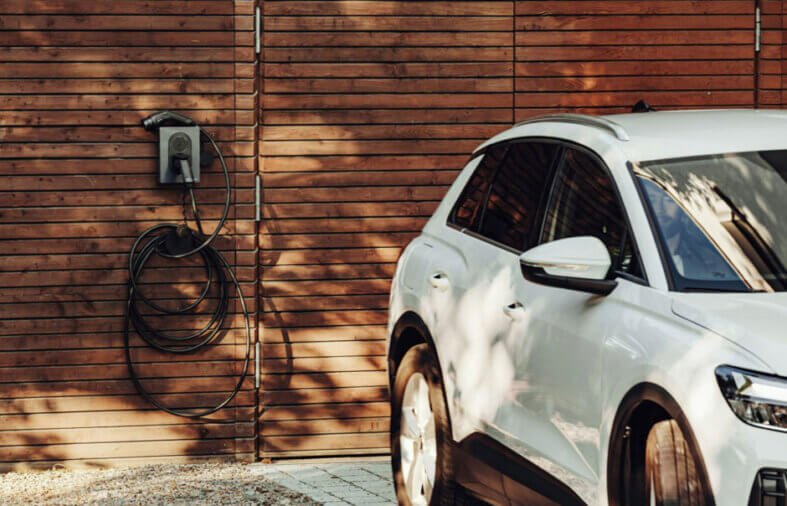The growing popularity of electric vehicles (EVs) has increased the demand for efficient charging solutions at home. Careful planning around its placement is crucial to ensure optimal use of your EV charger. Working with an installer ensures your EV charger is positioned in the most functional and cost-effective location. We will explore key factors to consider when choosing where to place your EV charger and why working with a reputable ev charger installer is beneficial. Proper placement will help you maintain convenience, efficiency, and long-term savings, making your charging experience seamless.
The Importance of Accessibility and Convenience
Regarding EV charger placement, convenience should be a top priority. One of the main reasons people install EV chargers at home is the ease of charging at their leisure, without having to visit public stations. The charger’s location should make it simple to connect your vehicle without frequent adjustments. Garages or driveways are typically the most convenient spots, as they provide easy access to your car while minimizing exposure to the elements. However, you’ll also want to consider proximity to your vehicle’s charging port. Depending on the layout of your property, this could influence whether the charger should be mounted on a wall, a post, or even indoors with an extension cable.
The goal is to avoid creating a situation where you must move the car around to plug it in. Therefore, it’s essential to work with an installer who can help identify the best place for your EV charger based on the orientation of your parking area. Whether you park your car in a garage or an open space, optimizing the charger’s location will make the charging process more convenient and less hassle in your daily routine. Additionally, an installer can advise on specific charger models that may offer flexibility regarding cable length and placement options, further enhancing the convenience factor.
Consider Electrical Load Capacity and Safety
In addition to convenience, electrical load and safety should be top concerns when determining where to place your EV charger. Not all parts of your home’s electrical system may be suited to handle the additional demand that an EV charger brings. A professional installer will assess your home’s electrical capacity and recommend an appropriate location to ensure your system can support the charger without overloading circuits.
Safety is another vital consideration when selecting your charger’s placement. Water, extreme temperatures, or potential damage from vehicles can all compromise the functioning of an EV charger. Garages are ideal because they provide a controlled environment that limits exposure to the elements. However, outdoor mounting requires weatherproof chargers for homes without garages, which can resist rain, snow, and UV damage. Working with an installer who understands these considerations can ensure the charger is positioned in a safe, compliant location that minimizes risk. Electrical codes and regulations will also influence your installer’s recommendations, as they are designed to prevent issues such as electrical surges and short circuits that could lead to hazards.
Your installer will also determine the optimal route for wiring the charger to your electrical panel. This process involves running cables and ensuring the placement complies with local building codes and permits, which vary by region. The installation process will often include adding a dedicated circuit to prevent your EV charger from interfering with other appliances in your home, maintaining safety and functionality.
Avoiding Costly Wiring or Infrastructure Changes
Another crucial reason to work with an installer is to avoid unnecessary costs due to complex wiring or infrastructure upgrades. The placement of your EV charger should minimize the distance between the charging station and your main electrical panel. The further the distance, the more expensive and complicated the installation becomes, as longer runs of heavy-gauge wiring are required. This can significantly increase the cost of materials and labor.
Strategically placing the charger near your electrical panel can save you hundreds of dollars in installation costs. An installer can evaluate your home’s layout and recommend a spot that minimizes wiring complexity while still being convenient for everyday use. For example, if your electrical panel is in the garage, placing the EV charger nearby makes sense. Still, if it’s in the basement or another floor, careful planning is required to route the wiring efficiently. By minimizing the wiring, you save money and reduce the risk of voltage drops that can occur when electricity travels over longer distances, affecting charging speed and efficiency.
Additionally, an installer will assess the existing electrical infrastructure in your home to determine whether an upgrade is necessary. In some cases, older homes may not have sufficient electrical capacity to handle the additional load, requiring an electrical panel upgrade. An experienced installer can help you navigate these situations, providing advice on future-proofing your home’s electrical system for more advanced EV chargers or other high-demand appliances that may be added. Proper planning will save you from expensive modifications later on.
Optimizing the placement of your EV charger with the help of an installer not only ensures convenience, safety, and long-term savings. Proper planning can avoid costly electrical modifications and allow for future upgrades, whether your charger is placed indoors or outdoors. By working closely with an installer, you can optimize your EV charger placement, ensuring a smooth charging experience that fits your current and future needs.








